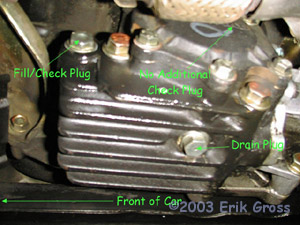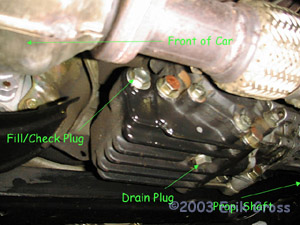Why Do I Want To Do This?
- Leaking transfer case seals can at a minimum, make a mess by dripping oil, but if allowed to continue, the transfer case will eventually run out of oil and it will seize. That will make all four wheels stop turning and send you into a skid, possibly causing an accident. Hence the recall.
How Often Should I Do This?
- If you ever see the seals leaking, take your car to your Mitsubishi or Dodge dealer and have them check it out - this is a real safety issue and is not to be taken lightly.
- This page is somewhat outdated as of Mitsubishi's issuing of the recall, but I'll leave it here because it still has some good documentation...
How Long Will It Take Me To Do This?
Note: This does not include time to perform any pre- or post-tasks.- First Timers: 45 minutes
- Seasoned Enthusiast: 15 minutes
Anything I Should Do Prior To Attempting This Procedure?
- Raise and Safely Support Front of Car
- Remove Exhaust Downpipe
- Remove Transfer Case
What Mitsubishi Parts Will I Need?
All Years
- (1) MB837030 ($29.08ea) Transfer Case Input Shaft Seal
- (1) MB837031 ($32.36ea) Transfer Case Output Shaft Seal
What Other Parts Will I Need?
- None
Where Can I Get the Parts I Need?
| Part | Company/Contact | Part Number | |
|---|---|---|---|
|
|
Transfer Case Input Shaft Seal |
Mike Deal at Rockville Mitsubishi |
MB837030 |
|
|
Transfer Case Output Shaft Seal |
Mike Deal at Rockville Mitsubishi |
MB837031 |
What Tools May/Will I Need?
- Small Flat Screwdriver or Pick
- MD998304 Oil Seal Installer
- MD998812 Oil Seal Installer Cap
- MD998824 Oil Seal Installer Adapter








